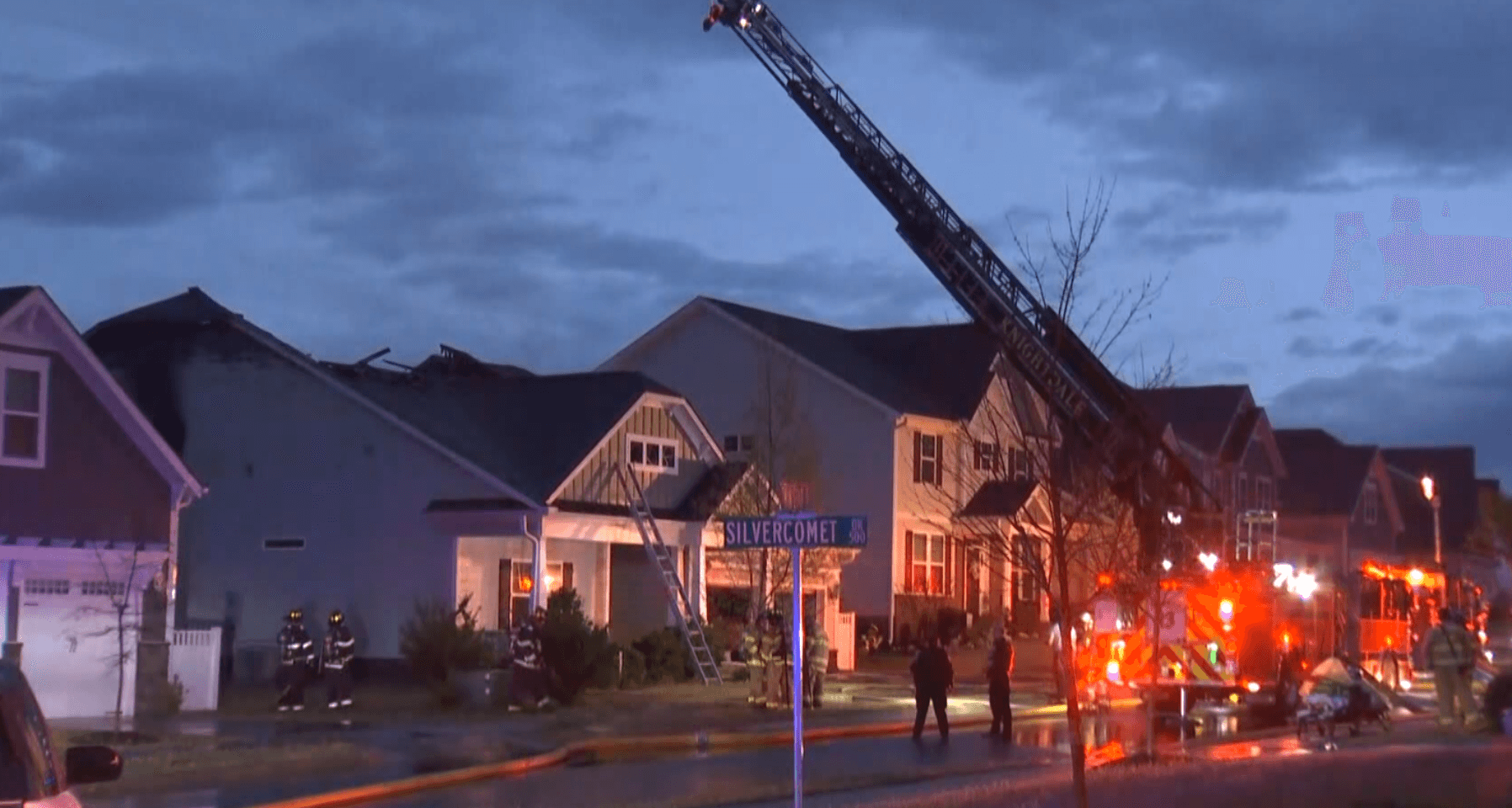Fallen Power Lines, Water Access Complicate Knightdale House Fire Response
Knightdale firefighters battled a large house fire on Riverview Road on November 13, 2025, facing arcing power lines in the driveway and no nearby fire hydrant. The situation required tanker trucks from multiple stations to shuttle water, left the home extensively damaged, and prompted a Wake County Fire Marshal's Office investigation, raising questions about infrastructure and emergency readiness in unhydranted areas.

Knightdale firefighters responded late on Wednesday, November 13, 2025, to a large house fire on Riverview Road in Wake County that presented immediate operational hazards and logistical constraints. Fallen power lines in the driveway were arcing when crews arrived, complicating access and forcing incident commanders to prioritize extinguishing the structure while managing electrical danger. The residence sustained extensive damage, and a man and his cat escaped without serious injury.
Because the property is located in an area without a fire hydrant, Knightdale tapped tanker trucks from multiple stations to supply water on scene. Battalion staff on scene provided detailed accounts of the operational challenges, including coordinating tanker shuttles and working around energized downed lines. The Wake County Fire Marshal's Office will investigate the cause of the blaze and assess the sequence of events that contributed to the damage and response.
The incident underscores persistent infrastructure and emergency management issues across Wake County that affect public safety and municipal budgeting. Areas without hydrant coverage rely on tanker operations, which lengthen response time and consume significant personnel and apparatus resources. That dynamic places strain on smaller departments and can influence mutual aid commitments between towns and the county, particularly during concurrent incidents.
Arcing power lines add a layer of interagency complexity, requiring coordinated action with utility providers to deenergize circuits before certain operations can proceed safely. That coordination affects not only firefighter safety, but also the speed with which property can be secured and damage can be mitigated. The Fire Marshal's investigation will likely examine whether fallen lines contributed to ignition, or whether they were a consequence of the fire, and will inform recommendations for utility and emergency response collaboration.
For Wake County residents, the event is a reminder that local infrastructure choices and budget priorities have direct public safety consequences. Decisions about hydrant extension, apparatus funding, and intergovernmental mutual aid agreements are political choices made by elected town councils and county commissioners. Voters and community groups can press for clearer plans on extending water mains, investing in tanker capacity, and strengthening protocols for sharing resources in emergencies.
As the Fire Marshal's Office completes its review, residents should expect an accounting of findings and any recommended operational changes. The episode on Riverview Road highlights the need for transparency from both emergency services and elected officials on how Wake County will address vulnerabilities in fire protection coverage, coordination with utilities, and long term investments that reduce risk for households outside hydrant networks.


